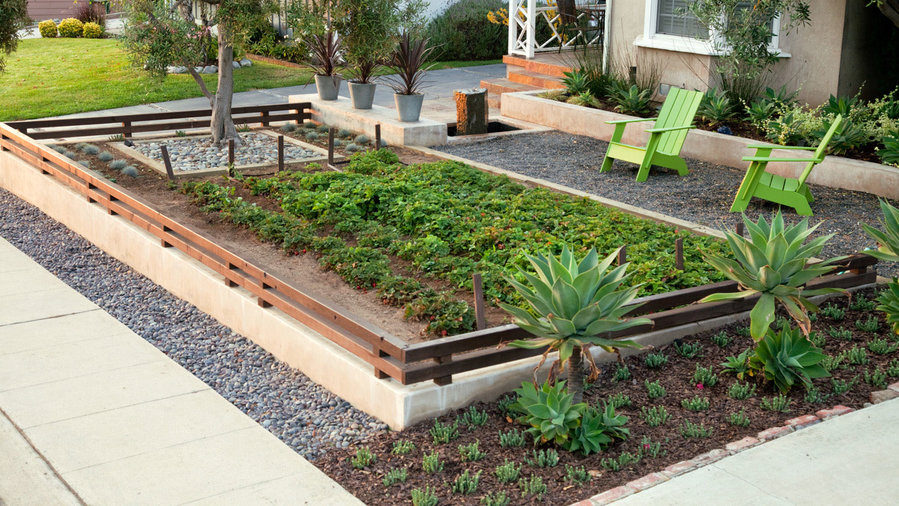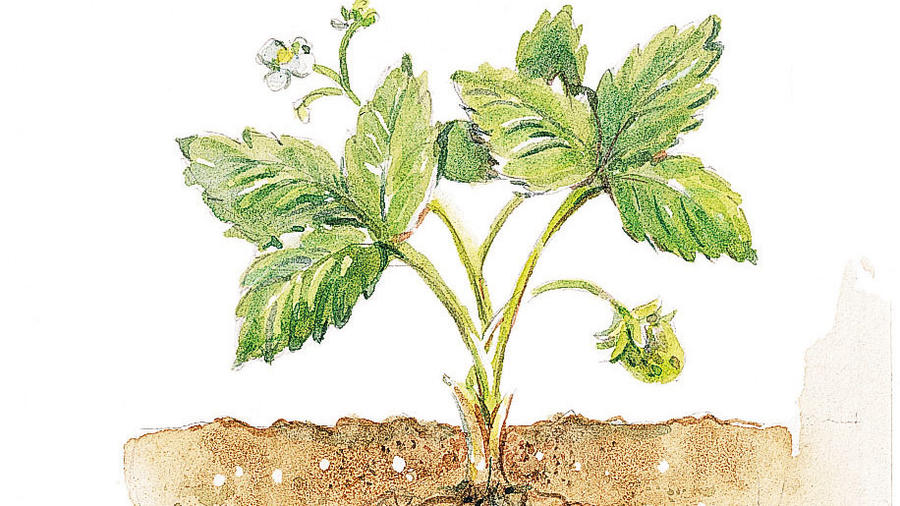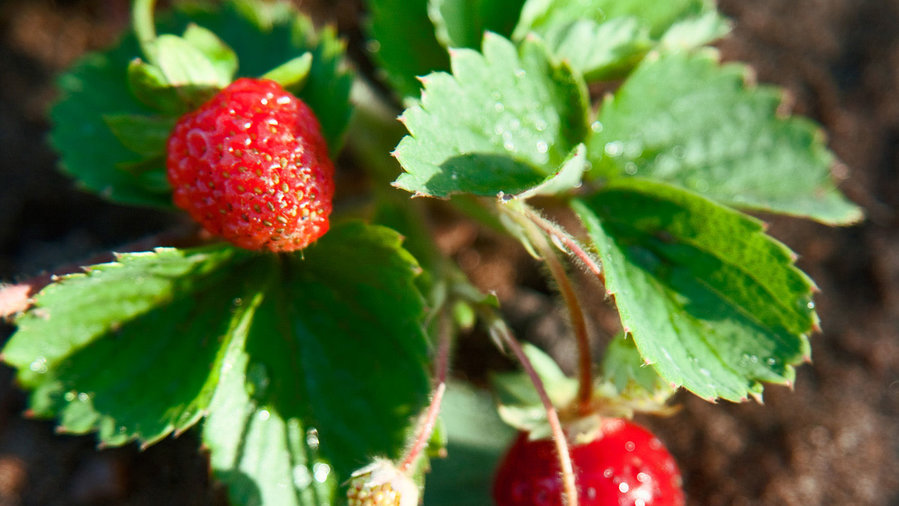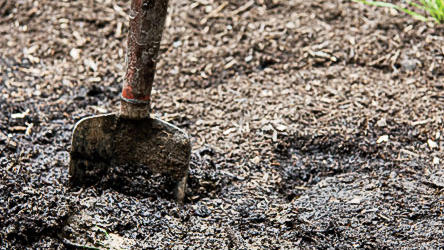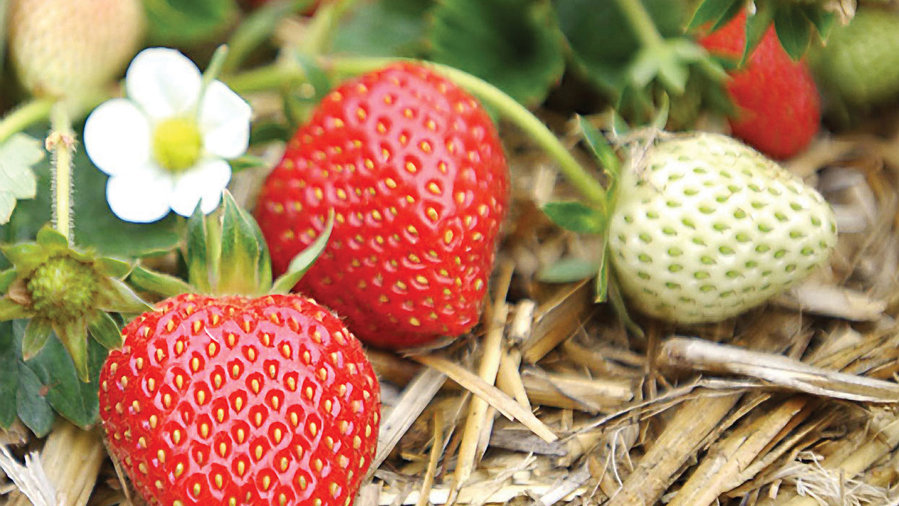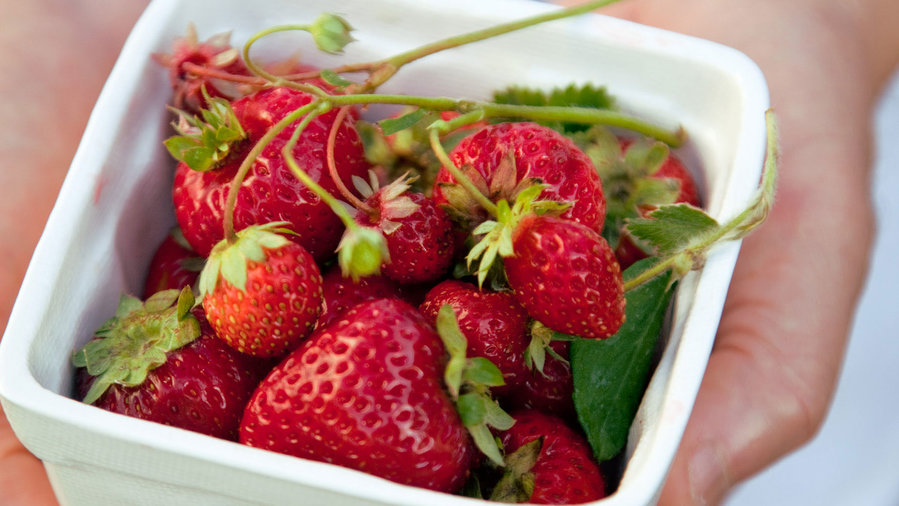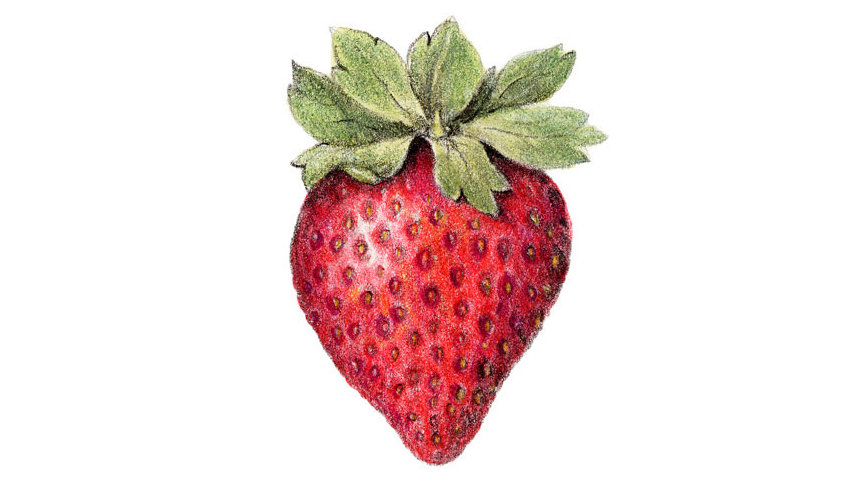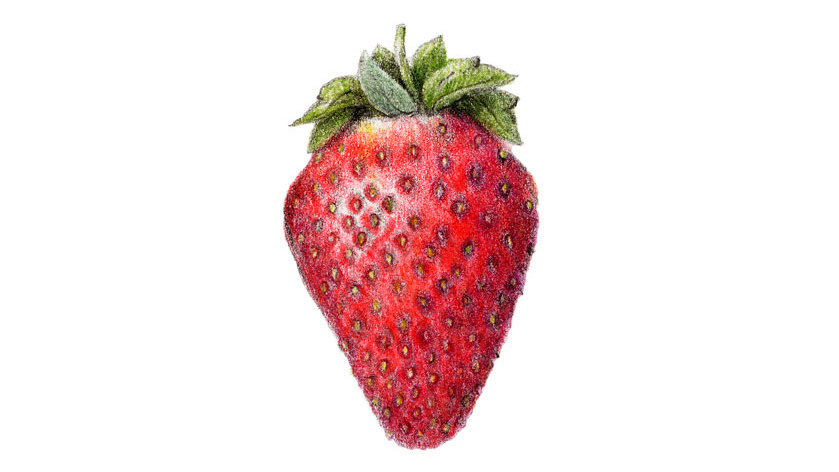Photo by Jennifer Cheung; written by Susan Heeger
Front-yard strawberry patch
Scrapping the front lawn comes naturally to Calvin Abe. “My garden is about exploring ideas,” says the L.A. landscape architect, who has used the spot to experiment with everything from native plants to Mediterranean ones over the years. His latest endeavor: a front-yard strawberry patch, which was inspired by his childhood growing up on his grandfather’s farm outside Sacramento. “I remember the smell of the berries, the scent of the earth they grew in,” he says. “And how—for a treat—my grandfather would serve me fresh berries over homemade ice cream.”
The front yard may seem an unlikely spot for a strawberry patch, but it made perfect sense to Abe. The space was sunny and big enough for strawberries, and the plants—pretty, green, and neat—would look great in front of his Westchester neighborhood house. So he cleared and leveled the slightly sloped yard, mail-ordered bare-root plants, and started planting.
Photo by Jennifer Cheung; written by Susan Heeger
Fruitful crop
The first year, he harvested 4 gallons of berries—more than one man could ever eat alone. “I love sharing,” says Abe, who doesn’t mind neighbors’ snacking from his plants. During evenings when he’s out there tending the berries, neighbors often stop to chat and ask questions. Some even leave inspired to rethink their own lawns.
Written by Susan Heeger
Grow your own
Timing
In mild-winter areas, plant standard strawberries from bare-root stock in late winter or early spring. In cold climates, wait until spring to plant.
Photo by Jennifer Cheung; written by Susan Heeger
Selecting plants
Buy enough for the space you have in mind. The plants spread by runners to about 1 foot across. (To fill his 15- by 30-foot patch, Abe needed 225 plants—150 of the June-bearing ‘Chandler’ and 75 of the everbearing ‘Ozark Beauty’.)
Photo by Kimberley Burch; written by Susan Heeger
Prepping your soil
It should be rich, well-drained, and acidic. Before planting, dig in organic matter (Abe used about 20 cubic feet to prep his patch).
Illustration by Damien Scogin; written by Susan Heeger
Spacing
Set plants 14 to 18 inches apart, in mounded rows about 2 feet apart.
Photo courtesy of Sunset Western Garden Book of Edibles; writt
Photo courtesy of Sunset Western Garden Book of Edibles; writt
Planting
The crown should be slightly above soil level (a buried crown can rot). Mulch with straw to deter weeds and keep berries clean.
Photo by Jennifer Cheung; written by Susan Heeger
Care
Give plants consistent moisture during growing season; use soaker hoses or a drip-irrigation system to prevent disease.
Illustration by Wendy Hollender; written by Susan Heeger
Best varieties for your region: Northwest
‘Hood’, ‘Puget Reliance’, and ‘Rainier’ (west of the Cascades); ‘Shuksan’ (east of the Cascades); ‘Quinault’
Illustration by Wendy Hollender; written by Susan Heeger
Best varieties for California
‘Chandler’ (especially Santa Barbara and south), ‘Seascape’, ‘Sequoia’
Illustration by Wendy Hollender; written by Susan Heeger
Best varieties for the Southwest
‘Camarosa’, ‘Chandler’, ‘Ozark Beauty’, ‘Shasta’
Illustration by Wendy Hollender; written by Susan Heeger
Best varieties for Rocky Mountain states
‘Fort Laramie’, ‘Ogallala’, ‘Tribute’, ‘Tristar’
